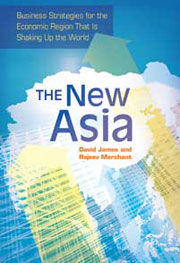 Like Indonesia, the Philippines is a nation consisting of a huge number of islands – just not as many. 7,107 instead of 17,508. With such a unique geographical makeup comes the many challenges of economic and political integration, communications, transportation, infrastructure-building, and governing. Yet the Philippines, like Indonesia, is the beneficiary of plentiful natural resources, a large, productive population of 104 million people, and a strategic location at the southeastern extremity of East Asia.
Like Indonesia, the Philippines is a nation consisting of a huge number of islands – just not as many. 7,107 instead of 17,508. With such a unique geographical makeup comes the many challenges of economic and political integration, communications, transportation, infrastructure-building, and governing. Yet the Philippines, like Indonesia, is the beneficiary of plentiful natural resources, a large, productive population of 104 million people, and a strategic location at the southeastern extremity of East Asia.
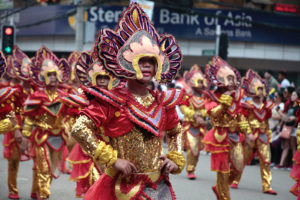 The Philippines was first inhabited by indigenous tribes who migrated there from other locations in the region. Its first contact with the Western world came in 1521 with the arrival of Ferdinand Magellan, the Portuguese navigator. Later, in 1543, a Spanish expedition to the islands of Samar and Leyte gave them the name Las Islas Filipinos, after the Spanish King Philip II, which later became the country’s name. Other Spanish expeditions, in 1565 and 1571, established permanent settlements at San Miguel on the island of Cebu and at Manila on Luzon. Thus began an era of Spanish colonization that lasted more than three centuries.
The Philippines was first inhabited by indigenous tribes who migrated there from other locations in the region. Its first contact with the Western world came in 1521 with the arrival of Ferdinand Magellan, the Portuguese navigator. Later, in 1543, a Spanish expedition to the islands of Samar and Leyte gave them the name Las Islas Filipinos, after the Spanish King Philip II, which later became the country’s name. Other Spanish expeditions, in 1565 and 1571, established permanent settlements at San Miguel on the island of Cebu and at Manila on Luzon. Thus began an era of Spanish colonization that lasted more than three centuries.
The Spanish achieved economic growth and political unity during the 19th century for most of the Philippine islands, investing heavily in public education and improved infrastructure, such as train systems, ports and bridges. Foreign trade expanded, but the country never became profitable for Spain as a colony. Spanish support for the Philippines ultimately waned in the face of struggles with revolutionary Filipinos in the late 1800s and conflicts with the United States during the Spanish-American War. Following that war, in 1898, control of the Philippines was ceded to the United States.
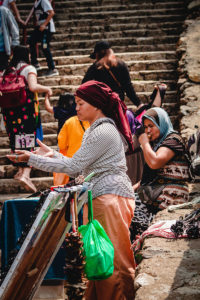 The United States governed the Philippines from 1898 until the invasion and occupation of the country by the Japanese in 1942. Prior to the Japanese invasion, the United States had sought to prepare the Philippines for eventual independence, and in 1935 had established the country as a self-governing commonwealth. Control was returned to the United States at the conclusion of World War II in 1945, and the Philippines was declared an independent constitutional democracy and sovereign nation on July 4, 1946.
The United States governed the Philippines from 1898 until the invasion and occupation of the country by the Japanese in 1942. Prior to the Japanese invasion, the United States had sought to prepare the Philippines for eventual independence, and in 1935 had established the country as a self-governing commonwealth. Control was returned to the United States at the conclusion of World War II in 1945, and the Philippines was declared an independent constitutional democracy and sovereign nation on July 4, 1946.
After independence, the Philippines maintained close political ties with the United States on the basis of U.S. regional military strategies and Philippines commercial interests. The United States became the Philippines’ largest trading partner and its major source of foreign investment. In 1991, however, seeking greater independence, the Philippines denied the United States a 10-year extension of the use of U.S. military bases in the country, placing a substantial chill on relations between the two countries. Since that time, the Philippines has sought to redirect its relationship with the United States as one based on equal partnership of two sovereign nations and on economic cooperation.
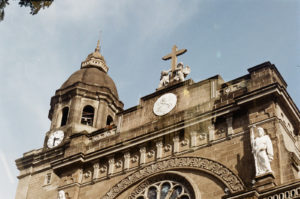 The Philippines’ economy grew steadily during the early 1900s under United States rule, largely in foreign trade of agricultural and forest products. Following World War II, its economy grew further and more broadly, transitioning from one primarily based on the export of agricultural products to one based more on services and manufacturing. It is one of the world’s leaders in providing global outsourced business services. Primary exports now include semiconductors and electronic products, transport equipment, garments, copper products, petroleum products, coconut oil, and fruits. Its economy is also boosted by remittances from an estimated five million overseas Filipino workers to their families in the Philippines, thereby supporting domestic consumption.
The Philippines’ economy grew steadily during the early 1900s under United States rule, largely in foreign trade of agricultural and forest products. Following World War II, its economy grew further and more broadly, transitioning from one primarily based on the export of agricultural products to one based more on services and manufacturing. It is one of the world’s leaders in providing global outsourced business services. Primary exports now include semiconductors and electronic products, transport equipment, garments, copper products, petroleum products, coconut oil, and fruits. Its economy is also boosted by remittances from an estimated five million overseas Filipino workers to their families in the Philippines, thereby supporting domestic consumption.
The Asian Financial Crisis of 1997-1998 hit the Philippines hard, reducing its GDP growth in 1998 to practically zero. Subsequently, its GDP growth revived and is expected to average five percent per annum in 2013-2017. Moreover, with plentiful resources and large population, its economy is expected to remain one of Asia’s strongest for decades.
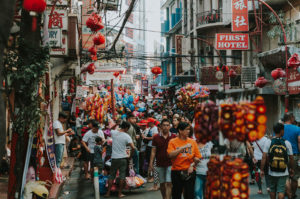 Yet the Philippines faces the many challenges of an island nation – economic and political integration, communications, transportation, infrastructure-building, and governing. All of these are works in progress for the Philippines, especially governing. Its political history has been one of tumult, repeatedly interfering with governance and growth from the time of independence.
Yet the Philippines faces the many challenges of an island nation – economic and political integration, communications, transportation, infrastructure-building, and governing. All of these are works in progress for the Philippines, especially governing. Its political history has been one of tumult, repeatedly interfering with governance and growth from the time of independence.
The tumult of Philippine politics started with the country’s first president, Manuel Roxas, who died of a heart attack in 1948 after less than two years in office. His successor, Elpidio Quirino, as president 1948-1953, struggled with reconstruction efforts complicated by the activities of the Hukbalahap guerillas, a military group supported by the Communist Party of the Philippines. Ramon Magsaysay, president 1953-1957, promised sweeping economic reform in the face of heightened religious hostilities among the populace and was popular with poor Filipinos, but he was killed in an airplane crash in 1957. Next came Carlos Garcia (1957-1961), who emphasized a “Filipino First” agenda to give Filipinos a greater role in economic development, and then Diosdado Macapagal (1961-1965), who achieved major land law reform by establishing land tenancies based on fixed rentals paid by farmers rather than a percentage of the harvest.
Notwithstanding the efforts of Macagapal and other Philippine leaders to implement reforms that would transfer greater economic power to the country’s lower classes, significant power continues to be held by large family-owned conglomerates whose forebears controlled large tracts of land and whose heirs extended their reach to industry and other commercial activities. These are the landed gentry of the Philippines who have protected their interests with political investments.
 Ferdinand Marcos, in 1965 the president of the Philippines Senate, defeated Macapagal in the country’s presidential election to became the longest-serving president of the country, ultimately ousted by Corazon Aquino in 1986. Early in his presidency, Marcos initiated ambitious public works projects and intensified tax collection which brought the country economic prosperity throughout the 1970s. His administration built more roads than all his predecessors combined, and more schools than any previous administration, but entrenched interests combined with a corrupt legislature succeeded in blocking implementation of many of his projects. Economic growth slowed, civil disobedience rose, the Communist Party of the Philippines formed the Maoist-inspired New People’s Army, and the Moro National Liberation Front fought for an independent Muslim nation in Mindanao.
Ferdinand Marcos, in 1965 the president of the Philippines Senate, defeated Macapagal in the country’s presidential election to became the longest-serving president of the country, ultimately ousted by Corazon Aquino in 1986. Early in his presidency, Marcos initiated ambitious public works projects and intensified tax collection which brought the country economic prosperity throughout the 1970s. His administration built more roads than all his predecessors combined, and more schools than any previous administration, but entrenched interests combined with a corrupt legislature succeeded in blocking implementation of many of his projects. Economic growth slowed, civil disobedience rose, the Communist Party of the Philippines formed the Maoist-inspired New People’s Army, and the Moro National Liberation Front fought for an independent Muslim nation in Mindanao.
In the face of lawlessness and the threat of a Communist insurgency, Marcos declared martial war in September 1972, curtailing press freedom and other civil liberties, closing down Congress and media establishments, and ordering the arrest of opposition leaders and militant activists. Marcos finally lifted martial law in January 1981. The Philippines economy benefitted from martial law, but corruption on the part of the Marcos regime and its cronies, fueled by vested interests, was rampant.
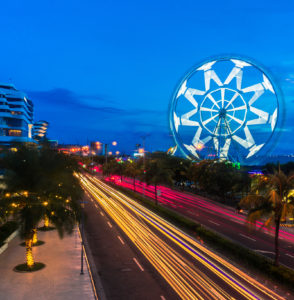 Corazon Aquino’s administration (1986-1992) was considered weak and fractious, hampered by several unsuccessful coups attempted by disaffected members of the Philippine military. Fidel Ramos (1992-1998) sought a “national reconciliation” and succeeded in bringing military insurgencies to a temporary end. Joseph Estrada (1998-2001), a former movie actor, began with policies to help the poor and develop the country’s agriculture sector, but ended with his early resignation over charges of corruption. The administration of Gloria Macapagal-Arroyo (2001-2010) was marked by fractious politics and attempts to impeach her for election fraud following her 2004 reelection. The administration of Benigno Aquino III (2010- ), the son of Corzon Aquino, faces continued threats from several groups, including ethnic Moros in the southern Philippines and the New People’s Army operating throughout much of the country. It also faces increased tension with China over disputed territorial claims in the South China Sea.
Corazon Aquino’s administration (1986-1992) was considered weak and fractious, hampered by several unsuccessful coups attempted by disaffected members of the Philippine military. Fidel Ramos (1992-1998) sought a “national reconciliation” and succeeded in bringing military insurgencies to a temporary end. Joseph Estrada (1998-2001), a former movie actor, began with policies to help the poor and develop the country’s agriculture sector, but ended with his early resignation over charges of corruption. The administration of Gloria Macapagal-Arroyo (2001-2010) was marked by fractious politics and attempts to impeach her for election fraud following her 2004 reelection. The administration of Benigno Aquino III (2010- ), the son of Corzon Aquino, faces continued threats from several groups, including ethnic Moros in the southern Philippines and the New People’s Army operating throughout much of the country. It also faces increased tension with China over disputed territorial claims in the South China Sea.
The Philippines is a vibrant but restive country of competing interests, political unrest, official corruption, and vested interests. Powerful landed gentries often seek to dampen efforts of economic reform, impede trade liberalization, and discourage foreign investment. Yet its economy keeps growing and many businesses do well there. The Philippines may have as many challenges as it has islands, but then its opportunities are far greater in number.
© Copyright 2013 ABC-CLIO
